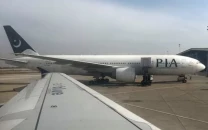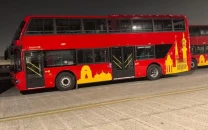Who killed General Zia?
Ijazul Haq blamed General Beg for trying to hide the effects of a missile fired into Zia's plane from another plane.

No one can say who killed Zia. But when he took Beg as the army vice-chief, Zia was deeply committed to the Arabs in the post-Bhutto period. He was to offer Islamisation in return for funds that went into buying Pakistan’s sorely needed 40 F-16 warplanes and seed-money for the Zakat Fund. Islamisation was also meant to restrain revolutionary Iran. (Tehran was seen as destablising the Gulf states with acts of terrorism.) In 1980, the Gulf Cooperation Council (GCC) was created and Zia could not resist being secretly its ‘military teeth’.
According to Christopher M Davidson in The United Arab Emirates: A Study in Survival (Boulder: Lynne Rienner Publishers), 2005, p.206 and p.244, the plan for an anti-Iran axis existed up until 2001: “Until September 11, 2001, many of the strongly anti-Iranian emirates had favoured a ‘Sunni axis’ comprising the UAE, Saudi Arabia, Pakistan, and the Afghan Taliban, in an effort to curb potential Shia expansion.” The author footnoted that his information had come from “personal interviews, undisclosed locations, 2003”.
In 1980, Zia imposed Zakat on the Shia on the basis of a law written by Maruf Dualibi, an adviser to the Saudi King, while sitting in the Council of Islamic Ideology (CII). Islami Nazriati Konsal: Irtaqai Safar aur Karkardagi Council of Islamic Ideology: Evolution and Activity — (Dost Publications, Islamabad, 2006) records that “Dr Maroof Dualibi visited the offices of the Council” p.961. However, the Council’s own report to the government in December 1981, observed that Hudood laws were discussed by the Council and the Law Ministry under the guidance of Dr Maroof Dualibi who was specially detailed by the Government of Saudi Arabia for this purpose.
During the Iran-Iraq war, Zia became peacemaker and tried to intercede with Imam Khomeini but was not treated well by him because of the GCC affair. (Vali Nasr, The Shia Revival: How Conflicts within Islam will Shape the Future, Norton, 2006, p.162.)
The Arabs and the US were funding Zia’s jihad against the Soviets in Afghanistan. The Shia were excited by the Khomeini phenomenon but were under pressure from the anti-Shia Afghan militias centred in Peshawar. In 1987, when he appointed Beg as vice-chief, Zia had allowed a jihadi lashkar to stage a massacre of the Shia in Parachinar in Kurram Agency. The Arab-Iran sectarian conflict was relocated to Pakistan.
In 1985, the Deobandis got into the act, creating the Sipah Sahaba in Jhang (Punjab). In 1986, the Saudi-funded Rabita Alam Islami head of Nadva tul-Ulema madrassa of Lucknow in India, Manzur Numani, decided to compile apostatising fatwas targeting Shias. All the Deobandi madrassas of Pakistan sent fatwas to him to be compiled in a book, later distributed in Pakistan. In 1988, two incidents exacerbated the sectarian war: the massacre of Shias in Gilgit and the murder of Shia top leader Ariful Hussaini in Peshawar.
As Gordon Corera noted in his book Shopping for Bombs: Nuclear Proliferation, Global Security and the Rise and Fall of the AQ Khan Network (Oxford University Press, 2006, p.59-60): “At this point, without a green signal from Zia, Beg got together with Dr AQ Khan to sell Iran nuclear technology crucial to building an Iranian bomb.”
Dr Khan was already into selling his wares globally. Iran was the first country to receive centrifuges from him. According to the IAEA, he made the sale to Iran of all the required elements in 1987 in Dubai, collecting payment in Swiss francs. Zia did not know. He did not know either that Beg too had got into the act. (After Zia’s death, prime minister Nawaz Sharif was shocked that Beg had signed a secret nuclear deal with Iran without telling him.)
Zia had the Pakistan-specific Pressler Amendment to duck to keep the US dollars rolling in. Indian journalist Kuldip Nayar tricked Dr Khan into blabbing about the bomb, which sent Zia ballistic. At this point, the plot to kill Zia may have taken shape involving diverse categories of people, including the two pilots of the doomed C-130.
A report appearing in London’s Sunday Times titled “Pakistan’s Dr Nuke bids for the Presidency”, (August 24, 2008) by Simon Henderson revealed: “Khan’s activities give a new explanation for the crash of President Zia’s C-130 plane in 1988…. Wing Commander Mash’hood Hassan, the plane’s pilot, had also been flying Khan’s centrifuge equipment to China. On one such trip he confided in a colleague of Khan that he hated Zia, holding him responsible for the murder of a local religious leader [Ariful Hussaini]: “The day Zia flies with me, that will be his last flight”.” Hardly 10 days after Hussaini’s murder, on August 17, 1988, his co-pilot, Sajid, had told his mother he was going to do something big as he left home.
In 1993, Ijazul Haq forced prime minister Nawaz Sharif to set up an inquiry commission. The Justice Shafiur Rehman Commission ended the work saying the Pakistan Army did not let it conduct investigation into the Bahawalpur crash. Its report was sealed.
Published in The Express Tribune, December 8th, 2012.



















COMMENTS
Comments are moderated and generally will be posted if they are on-topic and not abusive.
For more information, please see our Comments FAQ